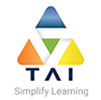The Understanding Cisco Cloud Fundamentals (CLDFND) exam (210-451) is a 90- Minute, 55—65 question assessment that is associated with the CCNA Cloud. This exam tests a Candidate’s knowledge of Cisco Cloud solutions. A candidate is tested on knowledge of DC Fundamentals; basics of UC, UF, Storage, Virtualization, and Network Services; Hypervisors, Windows Server and Linux OS; remote connectivity / VPN solutions; documentation of design, system builds, configurations, and support procedures.
The following topics are general guidelines for the content likely to be included on the exam. However, other related topics may also appear on any specific delivery of the exam. In order to better reflect the contents of the exam and for clarity purposes, the guidelines below may change at any time without notice.
About Understanding Cisco Cloud Fundamentals (CLDFND) (210-451)
Course Content
14% 1.0 Cloud Characteristics and Models
1.1 Describe common cloud characteristics
1.1.a On-demand self service
1.1.b Elasticity
1.1.c Resource pooling
1.1.d Metered service
1.1.e Ubiquitous network access (smartphone, tablet, mobility)
1.1.f Multi-tenancy
1.2 Describe Cloud Service Models
1.2.a Infrastructure as a Service (IaaS)
1.2.b Software as a Service (SaaS)
1.2.c Platform as a Service (PaaS)
16% 2.0 Cloud Deployment
2.1 Describe cloud deployment models
2.1.a Public
2.1.b Private
2.1.c Community
2.1.d Hybrid
2.2 Describe the Components of the Cisco Intercloud Solution
2.2.a Describe the benefits of Cisco Intercloud
2.2.b Describe Cisco Intercloud Fabric Services
24% 3.0 Basic Knowledge of Cloud Compute
3.1 Identify key features of Cisco UCS
3.1.a Cisco UCS Manager
3.1.b Cisco UCS Central
3.1.c B-Series
3.1.d C-Series
3.1.e Server identity (profiles, templates, pools)
3.2 Describe Server Virtualization
3.2.a Basic knowledge of different OS and hypervisors
22% 4.0 Basic Knowledge of Cloud Networking
4.1 Describe network architectures for the data center
4.1.a Cisco Unified Fabric
4.1.a.1 Describe the Cisco Nexus product family
4.1.a.2 Describe device virtualization
4.1.b SDN
4.1.b.1 Separation of control and data
4.1.b.2 Programmability
4.1.b.3 Basic understanding Open Daylight
4.1.c ACI
4.1.c.1 Describe how ACI solves the problem not addressed by SDN
4.1.c.2 Describe benefits of leaf/spine architecture
4.1.c.3 Describe the role of APIC Controller
4.2 Describe Infrastructure Virtualization
4.2.a Difference between vSwitch and DVS
4.2.b Cisco Nexus 1000V components
4.2.b.1 VSM
4.2.b.2 VEM
4.2.b.3 VSM appliance
4.2.c Difference between VLAN and VXLAN
4.2.d Virtual networking services
4.2.e Define Virtual Application Containers
4.2.e.1 Three-tier application container
4.2.e.2 Custom container
24% 5.0 Basic Knowledge of Cloud Storage
5.1 Describe storage provisioning concepts
5.1.a Thick
5.1.b Thin
5.1.c RAID
5.1.d Disk pools
5.2 Describe the difference between all the storage access technologies
5.2.a Difference between SAN and NAS; block and file
5.2.b Block technologies
5.2.c File technologies
5.3 Describe basic SAN storage concepts
5.3.a Initiator, target, zoning
5.3.b VSAN
5.3.c LUN
5.4 Describe basic NAS storage concepts
5.4.a Shares / mount points
5.4.b Permissions
5.5 Describe the various Cisco storage network devices
5.5.a Cisco MDS family
5.5.b Cisco Nexus family
5.5.c UCS Invicta (Whiptail)
5.6 Describe various integrated infrastructures
5.6.a FlexPod (NetApp)
5.6.b VBlock (VCE)
5.6.c VSPEX (EMC)
5.6.d OpenBlock (Red Hat)
Call Now- +91-921-276-0556


